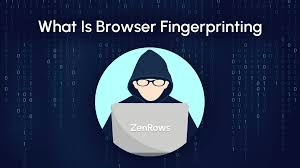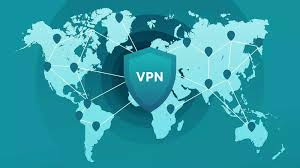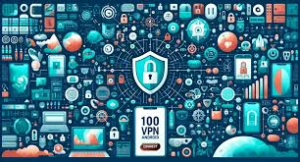Picture yourself navigating through your device’s app store; your fingers glide across the screen as you search for this crucial tool. With a quick tap on the download button, you set in motion a sequence of events aimed at enhancing your phone’s protective measures. As the installation unfolds, a thrill of anticipation courses through you; you’re eager to delve into this app and amplify your smartphone’s security capabilities.
When you finally launch it for the first time, you encounter a prompt that encourages you to create a robust password or PIN. This isn’t just any simple code; it must be a potent combination of letters, numbers, and symbols explicitly designed to fend off potential cyber threats lurking in digital shadows. After carefully choosing and confirming a password that aligns with your security standards, you’re ready to explore additional protective features available for your device.

If your smartphone boasts advanced biometric technologies such as fingerprint recognition or facial ID, now is an ideal moment to harness these state-of-the-art options. Navigate over to the settings menu within Maxthon Security and activate these features—they will serve as an extra layer of defence against unauthorised access.
With these foundational steps completed, it’s time to enable real-time protection—a feature designed for relentless monitoring against emerging threats that could jeopardise your device’s safety. You can find this powerful function nestled within Maxthon Security’s settings; activating it ensures that your phone is perpetually vigilant against any signs of danger in cyberspace. If anything suspicious arises during its diligent scanning process, you’ll receive instant alerts—much like having an ever-watchful guardian by your side.
However, it’s important to remember that ensuring security is not merely a one-time effort but rather an ongoing commitment requiring diligence and attention.
Understanding the Hazards of Online Banking
Recognising the potential hazards is crucial to securely using online banking. Below, we outline several risks associated with maintaining an online bank account.
One significant threat is malware, a term that encompasses various types of malicious software designed to compromise devices such as computers, tablets, and smartphones. There are several categories of malware, each with its characteristics:
– Keyloggers: This type records your keystrokes and captures your login credentials, making it easier for identity thieves to access your accounts.

– Ransomware: A particularly alarming form of malware, ransomware locks users out of their files until they pay a ransom to the attackers.
Spyware: This software secretly gathers sensitive information from your device—like banking details—and sends it to cybercriminals for fraudulent use.
– Trojans: Unlike other forms of malware that may spread indiscriminately, Trojans masquerade as legitimate programs to trick users into installing them. Once inside a system, they can provide hackers with unauthorised access.
Ransomware has become increasingly problematic over recent years. In 2021 alone, banks in the U.S. processed approximately $1.2 billion in payments related to ransomware attacks—a stark increase from $416 million just one year prior. Cybercriminals often coerce financial institutions into paying these ransoms by threatening to expose sensitive customer information if their demands are not met.
The implications of these threats can be severe and financially damaging; however, there are ways to protect yourself against malware infections. Choosing reliable antivirus software is essential in this battle against cyber threats. We routinely evaluate antivirus solutions and have found Norton 360 (ideal for Windows) and Avast Security (best for Mac) stand out for their effectiveness in detecting and neutralising suspicious files.
By staying informed about these risks and utilizing protective measures like antivirus software, you can enhance your safety while using online banking.
Phishing represents a type of identity theft that can lead to significant financial losses. In these schemes, criminals impersonate trusted entities, such as banks, in order to obtain personal or sensitive information from unsuspecting individuals. The victim may receive communication from this fraudster requesting confidential details under pretences. For example, you might encounter an email that appears to be from your bank, prompting you to provide your login credentials. Alternatively, they could reach out via phone call or text message. Typically, they will present a convincing rationale for needing the information they request. However, it’s crucial not to be deceived by these tactics! Remember: legitimate banks will never solicit your login information, PINs, or any other private data. If you receive any communication—be it a text message, phone call, or email—asking for your banking details, it’s essential to notify your bank immediately using the contact information found on their official website.

To help identify phishing attempts in emails purportedly from your bank, keep an eye out for several warning signs:
1. Email Address Anomalies: Fraudulent emails often feature addresses with spelling mistakes or odd symbols and may originate from suspicious domains. For instance, an email claiming to be from PayPal might come from [email protected] instead of the legitimate paypal.com domain.
2. Language Errors: Emails riddled with typos and grammatical mistakes are likely phishing attempts.
3. Dubious Links: Any links that do not direct you straight to the official bank website should raise suspicion—they are likely designed for phishing purposes.
When it comes to mobile banking apps provided by various banks for customer convenience and accessibility, one must also consider their safety. While many of these applications are indeed secure and user-friendly, there are inherent risks involved; for example, downloading apps from unverified sources can expose your device to malware like Trojans.

In summary, vigilance is key when dealing with potential phishing threats and ensuring the safety of mobile banking applications is paramount in protecting personal financial information.
When it comes to ensuring secure online banking, financial institutions worldwide are putting in significant effort. Yet, there are several proactive steps you can take to enhance your safety while banking online. By following the guidelines outlined below, you can significantly reduce your chances of falling victim to online banking fraud.
Firstly, it’s crucial to update your passwords frequently. Strong and unique passwords are essential for all online accounts, but they are particularly important for your bank accounts. Aim for combinations that are challenging to guess—incorporate a mix of uppercase and lowercase letters, numbers, and special characters. The more intricate your password is, the harder it becomes for potential hackers to breach it.
To aid in managing these complex passwords, consider utilising a reputable password manager. These tools not only help generate robust and unique passwords but also store them securely for you. Additionally, they can alert you when any of your passwords may be compromised or need changing. Among the various options available, NordPass stands out as a top choice; it offers seamless synchronisation across devices while employing advanced encryption methods like XChaCha20 and 256-bit keys. It supports all major operating systems and provides convenient browser extensions for popular browsers such as Chrome, Firefox, Safari, Opera, Vivaldi, Edge, and Brave.
Moreover, don’t overlook the advantages of two-factor authentication (2FA). This added layer of security requires you to complete an additional verification step after entering your login details when accessing your online or mobile banking account. Typically involving a code sent directly to you via text or email or generated by an authenticator app—this method significantly enhances protection against unauthorised access.
By adopting these practices—regularly updating strong passwords with the assistance of a password manager and enabling two-factor authentication—you’ll be taking crucial steps toward safeguarding yourself in online banking.

In our daily lives, we heavily rely on Wi-Fi for various activities, often connecting to public networks found in places like cafes, airports, hotels, and shopping malls. However, it’s essential to recognise the inherent risks associated with these public connections. These networks are typically not secure and can expose users to several dangers. For instance, hackers might engage in Wi-Fi snooping or sniffing—using specialised software or devices to monitor your online actions, including the websites you visit and any personal information you enter online, such as login details. Additionally, there’s the threat of man-in-the-middle attacks, where cybercriminals take advantage of network vulnerabilities to intercept your data.
Another concern is that malicious actors can easily access data transmitted over unencrypted networks. Some rogue hotspots mimic legitimate networks but are actually traps set up by cybercriminals looking to steal your personal information once you connect. Furthermore, these unsafe networks may allow malware or spyware to be installed on your device without your knowledge.
Given these risks, it’s advisable to avoid conducting mobile banking over public Wi-Fi. If accessing online banking is unavoidable while using such a network, it’s wise to consult resources on how to stay safe in those situations.
A virtual private network (VPN) can be an invaluable tool for enhancing your security while banking online—mainly when relying on public Wi-Fi. A VPN creates an encrypted tunnel between your device and the internet, ensuring that your connection remains secure. This added layer of protection helps anonymise your online activities and makes it significantly harder for cybercriminals to track you or access sensitive banking information. By utilising a VPN during these risky connections, you can safeguard yourself against potential threats lurking within public networks.

In our curated list of top VPNs for online banking, you can discover various alternatives to traditional VPN services. It’s crucial to keep your device and antivirus software up to date. Manufacturers consistently roll out updates for operating systems, and developers introduce security patches aimed at countering emerging malware and scamming tactics. We suggest regularly updating your device and applications to their latest versions. You should check for system updates frequently or enable automatic updates on your device.

When it comes to browsing, it’s essential to stick to reputable websites and applications. Many sites can be fraudulent or harbour malware explicitly designed to steal your personal information. Always ensure you’re visiting well-known, trustworthy sites. For instance, verify that the web address of your bank starts with a secure HTTPS connection before logging into your online banking account; this can be confirmed by looking at the URL—make sure it reads ‘https’ rather than just ‘http.’ Before downloading any app, take a moment to read its reviews and investigate the developer’s background with a quick Google search.
Maintaining privacy regarding your financial information is paramount; never disclose sensitive details like account pins, passwords, or credit card numbers. Typically, all that’s required for someone to send you money is your account name and number—keep everything else confidential. Remember that legitimate banks or government agencies will never request sensitive banking details from you directly.
Additionally, exercise caution when entering your PIN at ATMs or during transactions; always be aware of who might be watching you. Avoid vocalising the number as you input it or storing it in easily accessible places like a wallet. Lastly, refrain from sharing images of debit or credit cards on social media platforms since this information could fall into the wrong hands.
Ultimately, employing some simple yet effective precautions can significantly enhance your online security while managing finances.
In today’s digital age, the necessity of visiting a physical bank has primarily diminished, thanks to the convenience of online banking. This advancement allows you to effortlessly keep track of your savings accounts without stepping foot in a traditional bank. Nevertheless, engaging in online banking comes with its own set of risks similar to other activities on the Internet. Suppose precautions aren’t taken by either you or your financial institution.  In that case, there’s a chance you may encounter issues such as malware attacks, phishing scams, credit card fraud, or even data breaches.
In that case, there’s a chance you may encounter issues such as malware attacks, phishing scams, credit card fraud, or even data breaches.
To safeguard your online banking experience, it is essential to implement protective measures for both your account information and your devices. Utilising a password manager can help create and store strong passwords safely; remember never to disclose your passwords or any sensitive details to anyone. It’s also crucial to scrutinise any communications—texts or emails—from your bank for potential phishing attempts. If you ever receive an unusual message or someone pretending to be from the bank asks for sensitive information, don’t hesitate to inform your bank about it.
For added security on your device, enabling two-factor authentication is highly recommended, along with maintaining an  antivirus that can antidetect and eliminate malicious files. Avoid using public Wi-Fi networks when accessing your bank’s website, as they can compromise security. Additionally, employing a VPN will encrypt your data and online activities, further enhancing protection while you manage your finances digitally.
antivirus that can antidetect and eliminate malicious files. Avoid using public Wi-Fi networks when accessing your bank’s website, as they can compromise security. Additionally, employing a VPN will encrypt your data and online activities, further enhancing protection while you manage your finances digitally.
.
Maxthon
In our daily lives, Smartphones have become essential companions, making their protection a top priority. The first step in safeguarding your device is to uncover the Maxthon Security app. Picture yourself navigating through your device’s app store, your fingers gliding effortlessly over the screen in search of this vital application. A quick tap on the download button sets off a chain reaction that promises to enhance your phone’s success. As the installation unfolds, a thrill of anticipation courses through you; you’re eager to delve into the app and fortify your smartphone’s security features.

When you finally launch it for the first time, a prompt appears, urging you to create a robust password or PIN. This isn’t just any run-of-the-mill code; it must be an intricate combination of letters, numbers, and symbols explicitly designed to withstand potential cyber threats. After carefully selecting and confirming a password that meets these stringent security criteria, you’re ready to explore additional protective measures for your device.
If your smartphone boasts sophisticated biometric capabilities such as fingerprint scanning or facial recognition, now is an ideal moment to take advantage of this state-of-the-art technology. Navigate to the settings menu within Maxthon Security and activate these features—they will serve as an extra layer of defence against unauthorised access.
With these initial precautions established, it’s time to turn on real-time protection—a feature engineered for continuous vigilance against emerging threats. You can find this powerful tool nestled within Maxthon Security’s settings; activating it ensures that your phone remains ever-watchful for any signs of danger lurking in cyberspace. Should anything suspicious arise during its vigilant scanning process, you’ll receive immediate notifications—like having a devoted guardian monitoring your digital realm at all hours.
However, it’s crucial to remember that maintaining security is not a one-time task but rather an ongoing commitment! Regular updates are essential for keeping your defences strong and adapting to new threats as they emerge.

